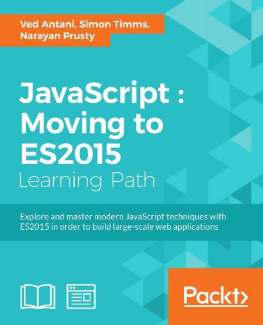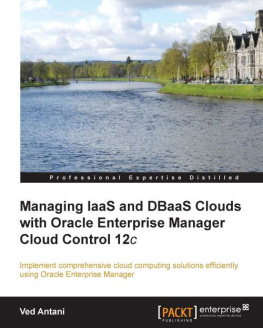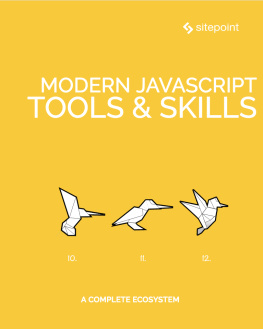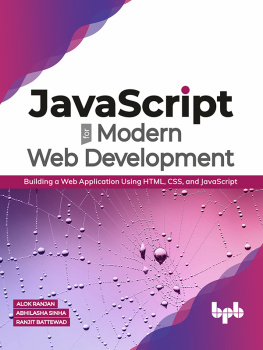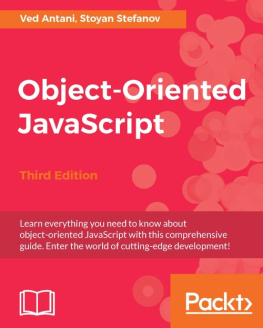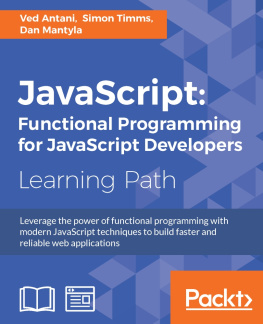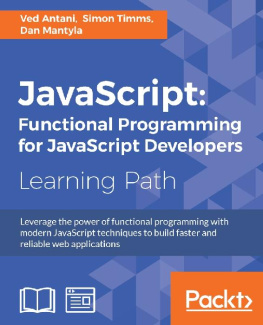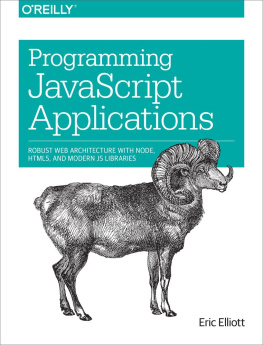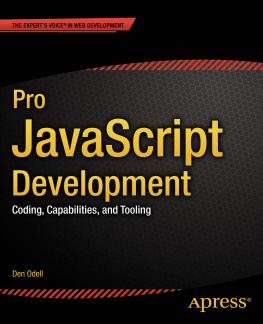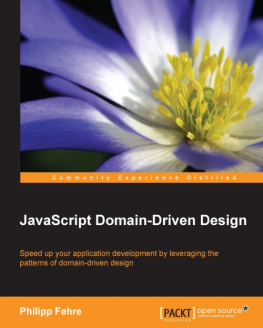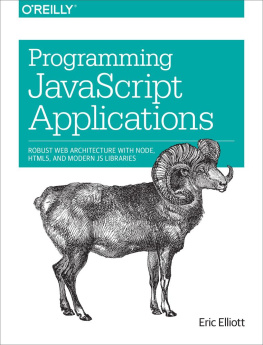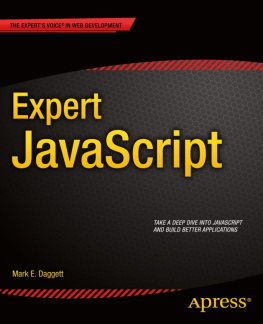Preface
It would seem that everything that needs to be written about JavaScript has been written. Frankly, it is difficult to find a topic related to JavaScript that has not been discussed ad nauseam. However, JavaScript is changing at a rapid pace. ECMAScript 6 has the potential to transform the language and how we code in it. Node.js has already changed the way in which we write servers in JavaScript. Newer ideas such as React and Flux will drive the next iteration of the language. While we spend our time learning the new features, there is no denying that the foundational ideas of JavaScript have to be mastered. These ideas are fundamental and need attention. If you are already an experienced JavaScript developer, you will realize that modern JavaScript is vastly different from the language that most people have known. Modern JavaScript demands a specific stylistic discipline and rigor of thought. Tools are more powerful and slowly becoming an integral part of the development workflow. Though the language seems to be changing, it is built on some very solid and constant ideas. This course emphasizes on these fundamental ideas.
All topics in this course have been covered in individual modules so that you develop your skill after the completion of a module and get ready for the next. Through this comprehensive course, you'll learn more about ES - 2015 from scratch to finish!
The first module provides you with a detailed overview of the language's fundamentals and some of the modern tools and libraries, such as jQuery, Underscore.js, and Jasmine.
The second module is divided into two main halves, each of which contains a number of chapters. The first half of the module, which we'll refer to as Part 1, covers the classical design patterns, which are found in the GoF book. Part 2 looks at patterns that are either not covered in the GoF book or that are specific to JavaScript.
In the last leg of this course, you will develop a solid knowledge of the latest JavaScript techniques, tools, and architecture required to build modern web apps.
What this learning path covers
, Mastering JavaScript, This module will be your companion as you master JavaScript and build innovative web applications. To begin with, you will get familiarized with the language constructs and how to make code easy to organize. You will gain a concrete understanding of variable scoping, loops, and best practices on using types and data structures, as well as the coding style and recommended code organization patterns in JavaScript. This module will also teach you how to use arrays and objects as data structures. You will graduate from intermediate-level skills to advanced techniques as you come to understand crucial language concepts and design principles. You will learn about modern libraries and tools so you can write better code. By the end of the module, you will understand how reactive JavaScript is going to be the new paradigm.
, Mastering JavaScript Design Patterns, Second Edition, Through this module, you will explore how design patterns can help you improve and organize your JavaScript code. You'll get to grips with creational, structural and behavioral patterns as you discover how to put them to work in different scenarios. Then, you'll get a deeper look at patterns used in functional programming, as well as model view patterns and patterns to build web applications. You will also delve into reactive design patterns and microservices as they are a growing phenomenon in the world of web development. You will also find patterns to improve the testability of your code using mock objects, mocking frameworks, and monkey patching. We'll also show you some advanced patterns including dependency injection and live post processing. By the end of the module, you'll be saved of a lot of trial and error and developmental headaches, and you will be on the road to becoming a JavaScript expert.
, Modern JavaScript Applications, In this module, we begin by creating a single page application that builds on the innovative MVC approach using AngularJS, then move forward to develop an enterprise-level application with the microservices architecture using Node to build web services. After that, shift your focus to network programming concepts as you build a real-time web application with websockets. Learn to build responsive, declarative UIs with React and Bootstrap, and see how the performance of web applications can be enhanced using Functional Reactive Programming (FRP). Along the way, explore how the power of JavaScript can be increased multi-fold with high performance techniques. By the end of the module, you'll be a skilled JavaScript developer with a solid knowledge of the latest JavaScript techniques, tools, and architecture to build modern web apps.
What you need for this learning path
Module 1:
All the examples in this module can be run on any modern browser. For the last chapter, you will need Node.js. You will need the following prerequisites to run the examples and samples from this module:
- A computer with Windows 7 or higher, Linux, or Mac OS X installed.
- The latest version of the Google Chrome or Mozilla Firefox browser.
- A text editor of your choice. Sublime Text, vi, Atom, or Notepad++ would be ideal. The choice is entirely yours.
Module 2:
There is no specialized software needed for this module. JavaScript runs on all modern browsers. There are standalone JavaScript engines written in C++ (V8) and Java (Rhino), and these are used to power all sorts of tools, such as Node.js, CouchDB, and even Elasticsearch. These patterns can be applied to any of these technologies.

